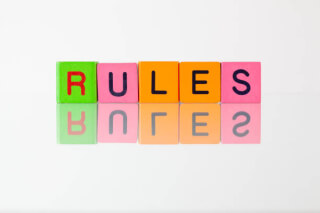Do You Believe These Life Insurance Myths?

Investopedia’s recent article entitled “Top 10 Life Insurance Myths” looks at the top 10 misconceptions about life insurance. Hopefully, this information will answer some questions, dispel some incorrect notions and make the process of getting coverage a little easily.
- “I’m single with no dependents, so I don’t need coverage.” Well, even single people need at least enough life insurance to cover the costs of personal debts, medical expenses and funeral bills. If you’re uninsured, you may leave a rash of unpaid expenses for your family or executor to deal with. It can also be a terrific way for low-income singles to leave a legacy to a favorite charity.
- “My coverage just needs to be twice my annual salary.” The amount of life insurance you need is based on your specific situation, due to the myriad factors to consider. You may need to pay off debts, like a mortgage, and provide for your family for several years.
- “I have term life insurance coverage at work, so I’m good.” That depends. If you’re single with modest means, your employer-paid or -provided term coverage may do it. However, if you have a spouse and/or children or you’re confident you’ll need coverage when you pass away to pay estate taxes, more coverage may be required.
- “I heard that the cost of my premiums is deductible.” In most cases, that is not true. The cost of personal life insurance is never deductible, unless the policyholder is self-employed, and the coverage is used as asset protection for the business owner. In that case, the premiums are deductible on Schedule C of Form 1040.
- “I gotta have life insurance at any cost.” That’s probably accurate for most of us. However, those who have sizable assets and no debt or dependents may be better off self-insuring. If you have your medical and funeral costs covered, life insurance coverage may be optional.
- “I should buy term and invest the difference.” Not necessarily. There are some distinct differences between term life and permanent life insurance—and the cost of term life coverage can become prohibitively high in later years. Therefore, if you know for certain that you have to be covered at death, look at permanent coverage. The total premium cost for a more expensive permanent policy may be less than the ongoing premiums that could last for years longer with a less expensive term policy. There’s also the risk of non-insurability. That could be disastrous for those who may have estate tax issues and need life insurance to pay them. This can be avoided with permanent coverage, because this policy becomes paid up after a certain amount of premium has been paid and remains in force until death.
- “Variable universal life policies are always better than straight universal life policies over the long haul.” Many universal policies pay competitive interest rates, and variable universal life (VUL) policies have several layers of fees for both the insurance and securities parts of the policy. Therefore, if the variable sub-accounts within the policy don’t perform well, a variable policyholder may realize a lower cash value than a person with a straight universal life policy. Poor market performance can generate substantial cash calls inside variable policies that mean additional premiums must be paid to keep the policy in effect.
- “It’s just the primary breadwinners who need life insurance coverage.” Not so. Think of the cost of replacing the services that have been provided by a deceased homemaker. They’re higher than you think. Insuring against the loss of a homemaker may make sense, especially when it comes to the expenses of cleaning and daycare.
- “I always should buy the Return-of-Premium (ROP) rider on any term policy.” Well, there are typically various levels of return-of-premium (ROP) riders available for policies that offer this. Many financial experts say that it’s not cost-effective and should be avoided. The decision will depend on your risk tolerance and other possible investment objectives. A cash flow analysis will tell, if you might come out ahead by investing the additional amount of the rider elsewhere, instead of including it in the policy.
- “I’m better off investing my money than buying any kind of life insurance.” Until you reach the breakeven point of asset accumulation, you need life insurance coverage of some sort (except for those who can self-insure). When you have $1 million of liquid assets, you can think about discontinuing or decreasing your million-dollar policy. However, you take a big risk when you depend solely on your investments in the early years of your life, particularly if you have dependents. If you die without coverage for them, there may be no other way to provide for them after the depletion of your current assets.
This hopefully clears up some of the common misunderstandings about life insurance. Don’t leave life insurance out of your budget, unless you have enough assets to cover your expenses after you’re gone.
Reference: Investopedia (July 2, 2018) “Top 10 Life Insurance Myths”

